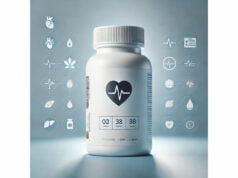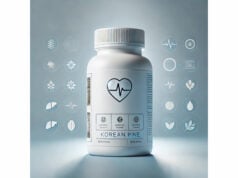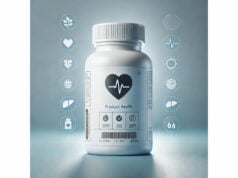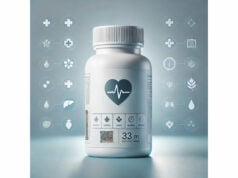
Kynurenic acid (KYNA) is a small molecule your body makes when it breaks down tryptophan—the same essential amino acid found in protein-rich foods. Inside the nervous and immune systems, KYNA acts like a traffic controller at key receptors: it can dampen overactive glutamate signaling at the N-methyl-D-aspartate (NMDA) receptor’s glycine site, modulate nicotinic acetylcholine signaling, and activate the immune-relevant receptor GPR35. Researchers are exploring KYNA for neuroprotection, mood disorders, metabolic balance, and gut–brain–immune crosstalk. You can also consume trace amounts from foods (for example, certain vegetables and grains), but diet typically contributes only a tiny fraction of what your body makes on its own. Because KYNA sits at the crossroads of neurochemistry and immunity, it offers an intriguing, targeted way to nudge physiology—yet the same pathways carry risks if pushed too far. This guide helps you understand how KYNA works, where evidence stands, how people are using it in practice, realistic dosage considerations, red-flag side effects, and how to minimize risk if you decide to experiment within conservative boundaries.
Essential Insights
- May help buffer excitatory signaling and calm inflammatory pathways via NMDA glycine-site antagonism and GPR35 activation.
- Human evidence is mixed and still limited; promising lab data do not equal proven clinical benefit.
- No standard supplement dose exists; many products suggest 25–150 mg KYNA daily, while clinical prodrug research used 1,440 mg/day of 4-chlorokynurenine under supervision.
- Avoid use if you are pregnant or breastfeeding, have uncontrolled psychiatric illness, or take drugs that affect glutamate signaling without clinician oversight.
Table of Contents
- What is kynurenic acid and how it works
- Benefits: what the evidence really shows
- Practical uses: when and how to take it
- Dosage, forms, timing, and combinations
- Mistakes to avoid and troubleshooting
- Safety, side effects, and who should avoid
- Evidence roundup and what to watch next
What is kynurenic acid and how it works
Kynurenic acid is an endogenous metabolite made along the kynurenine pathway, the primary route by which humans metabolize tryptophan. Two features make KYNA unusual: it influences both neuronal excitability and immune tone, and it sits downstream from enzymes that respond to stress, infection, and metabolic state (for example, indoleamine 2,3-dioxygenase and tryptophan 2,3-dioxygenase). That means your KYNA levels can shift with inflammation, diet, circadian rhythms, and medications.
Key receptor actions
- NMDA receptor (glycine co-agonist site) antagonism: By occupying the glycine modulatory site on NMDA receptors, KYNA can dial down glutamatergic overactivity. This mechanism underpins its reputation as a neuroprotective brake when excitation is excessive.
- α7 nicotinic acetylcholine receptor modulation: KYNA can inhibit α7 nAChR signaling, which is tied to attention, working memory, and anti-inflammatory reflexes. This duality—neuroprotection at one receptor, potential cognitive dampening at another—explains why “more” is not always better.
- GPR35 activation: Outside the brain (and in some brain cells), KYNA activates the G protein–coupled receptor GPR35, which is highly expressed in immune cells and the gastrointestinal tract. GPR35 signaling can temper inflammatory cascades and affect cellular energy handling.
Distribution and transport
KYNA is produced in many tissues, including brain astrocytes and peripheral organs. It crosses the blood–brain barrier poorly compared with its precursor kynurenine, which more readily enters the brain and is converted locally to KYNA by kynurenine aminotransferases (KATs). This matters for supplementation: raising peripheral KYNA may not linearly translate to central KYNA, whereas strategies that alter upstream flux (diet, gut, stress, physical activity) can shift local production patterns.
Dietary and microbiome contributions
Trace amounts of KYNA occur in foods (notably certain vegetables and cereals). However, estimates suggest diet typically contributes a small fraction of daily KYNA excretion. The gut environment influences the pathway by changing substrate availability and inflammatory tone; in principle, a calmer gut (less inflammatory signaling) nudges the pathway away from neurotoxic branches and toward protective ones, but individual responses vary.
Why context matters
Because KYNA touches excitatory neurotransmission and immune signaling, its effect depends on baseline state. In someone with excessive glutamatergic drive, a modest KYNA rise could feel stabilizing; in someone with balanced signaling, aggressive KYNA augmentation could blunt cognition or motivation. That is why careful dosing, short trials, and clear goals are essential.
Benefits: what the evidence really shows
Evidence for KYNA spans mechanistic lab work, animal models, nutrition research, and early human studies with a KYNA-mimicking prodrug. Here is a balanced synthesis of what these layers collectively suggest—and what they do not.
Neuroprotection under excitatory stress
By dampening NMDA receptor activity at the glycine site, KYNA can limit calcium influx and downstream oxidative stress during excitotoxic events. In models that mimic stroke, traumatic injury, or seizure-like activity, KYNA (or derivatives) often appears protective. Translation to everyday human brain health is not direct, but the mechanism is coherent: when excitation spikes, a brake helps. When excitation is normal, too much braking can dull processing speed or attention.
Mood and the glutamate hypothesis
Interest in glutamate-modulating approaches to depression led to trials of 4-chlorokynurenine (AV-101), a prodrug designed to boost a brain-penetrant KYNA analogue (7-chlorokynurenic acid) at NMDA glycine sites. Early-phase work clarified target engagement, but randomized trials in treatment-resistant depression did not show the robust, ketamine-like benefits many hoped for. The lesson: the pathway is pharmacologically tractable, but antidepressant efficacy is not guaranteed simply by blocking the glycine site. Dosing, patient selection, and network-level adaptations likely determine outcomes.
Inflammation and immune tone
Through GPR35, KYNA can reduce selected inflammatory signals in immune cells, including pathways that drive the NLRP3 inflammasome and mast-cell activation. In translational settings, that points to potential in conditions where neuroinflammation or peripheral immune activation aggravates symptoms. The flipside is that indiscriminate dampening might be unhelpful when a robust immune response is needed (for example, acute infection).
Gut–brain interface
Immune cells in the intestinal wall express GPR35, and intestinal epithelial health depends on balanced tryptophan metabolism. KYNA may support epithelial barrier function indirectly by moderating inflammatory signaling and oxidative stress. Nutrition studies indicate that although some foods contain KYNA, the amounts are typically low; focusing on whole-diet patterns that normalize the tryptophan–kynurenine flux (adequate protein, polyphenol-rich plants, stable glycemic control, good sleep) is more impactful than “eating KYNA.”
Metabolism and mitochondria (emerging)
Work in cardiometabolic models suggests GPR35-linked signaling can influence mitochondrial dynamics and energy handling under stress. These signals are promising but early; they support cautious optimism for KYNA as part of a resilience toolkit, not as a stand-alone metabolic therapy.
Bottom line on benefits
- KYNA is best framed as a context-dependent modulator—most useful when excitatory or inflammatory systems run “hot.”
- The strongest human data so far clarify mechanisms and safety boundaries, not sweeping clinical effects.
- For most people, KYNA is adjunctive at best: a targeted nudge layered on top of foundational habits and medical care, not a replacement for either.
Practical uses: when and how to take it
Because standardized therapeutic protocols are not established, practical use should be cautious, time-limited, and goal-driven. Think in terms of specific scenarios where KYNA’s mechanisms make sense, then test with conservative exposure.
Who might consider a short trial
- Adults who feel “over-amped” after cognitively intense days and want a gentler wind-down tool than sedative drugs.
- People with occasional sensory overstimulation (noise, crowded environments) seeking a calm-edge without heavy sedation.
- Individuals with high-inflammation lifestyles (poor sleep, frequent illness, high stress) who are already addressing root causes but want an adjunct that may lower inflammatory tone.
How to implement
- Define a clear outcome you can measure in a week (for example, fewer “overheated” evenings or less post-work overstimulation).
- Pick one form (capsule or powder) from a supplier that discloses exact KYNA content and batch testing.
- Start low and avoid stacking with other NMDA-modulating agents.
- Use a narrow window (evening or late afternoon), then reassess after 7–10 days.
Food-first approach
If you prefer to avoid supplements, improve tryptophan pathway balance rather than chasing dietary KYNA per se: adequate protein spaced across meals; magnesium- and B6-rich foods for enzyme cofactor support; polyphenol-rich plants to reduce chronic oxidative stress; and steady sleep/wake routines to temper inflammatory signaling. These basics shift the entire pathway toward a healthier baseline and are low-risk.
Stacking and timing
- With magnesium glycinate or L-theanine: Some people pair low-dose KYNA with gentle relaxants an hour before bed; start at half doses to avoid morning grogginess.
- Avoid with strong NMDA modulators (for example, high-dose dextromethorphan/bupropion combinations or ketamine therapy) unless your prescriber agrees—redundant mechanisms may cloud clinical response tracking.
- Training days: If your work demands intense focus, avoid first-time KYNA trials on those days; you want to identify any cognitive dulling when stakes are low.
When not to use
Do not self-experiment if you are pregnant or breastfeeding, have active psychosis or unstable mood, or take medications that materially alter glutamatergic tone without clearance from your clinician. In these situations, mechanism overlap increases the risk of unintended outcomes.
Dosage, forms, timing, and combinations
There is no universally accepted human dosing standard for KYNA supplements. Products vary widely, and many contain KYNA as one component in a broader “neuro balance” blend. Use the steps below to stay within conservative, practical bounds.
Common forms
- Capsules or tablets with declared KYNA content (for example, 25–100 mg per capsule).
- Powders with a tiny scoop; verify milligrams per scoop and avoid eyeballing.
- Prodrugs like 4-chlorokynurenine (AV-101) are investigational medicines, not dietary supplements; they were dosed at 1,440 mg/day in clinical research settings and are not for self-administration.
Conservative adult ranges (supplement context)
- Starter range: 25–50 mg KYNA once daily, late afternoon or evening, for 7 days.
- If well tolerated and still needed: Increase to 75–150 mg/day, split into two doses (late afternoon and 60–90 minutes before bed).
- Upper boundary for self-experimentation: 150 mg/day for no more than 2–4 weeks, then take a 1–2 week break. If no clear benefit by day 10 at 75–100 mg/day, discontinue—escalation beyond label directions is not justified.
Timing
- Evening use tends to suit people seeking wind-down support.
- If daytime use is trialed, schedule after cognitively light blocks and monitor attention and reaction time.
Combinations to consider carefully
- Magnesium (100–200 mg elemental) or L-theanine (100–200 mg): can complement subjective calm; introduce one at a time.
- Omega-3 DHA/EPA: foundational support for neuroinflammation; separate from KYNA dosing to track effects.
- Avoid combining with sedatives, strong NMDA antagonists, or heavy alcohol use.
Special populations
- Older adults: start at 25 mg and advance cautiously; age-related changes in receptor sensitivity can amplify effects.
- Low body weight or high sensitivity: remain at 25–50 mg and use alternate-day schedules.
- Renal or hepatic impairment: do not use without explicit clinician guidance and lab monitoring.
Measuring response
Use a simple 0–10 scale each evening for overstimulation, ease of wind-down, and next-day alertness. If scores do not improve without trade-offs (morning fog, muted motivation), stop. Mechanistic plausibility alone is not a reason to continue.
Mistakes to avoid and troubleshooting
Mistake 1: Chasing high doses for faster results
More glycine-site antagonism does not mean better outcomes. Overshooting can blunt attention, working memory, and motivation. If you feel “flat” or foggy, cut your dose by at least 50% or stop.
Mistake 2: Treating KYNA as a catch-all “anti-inflammatory”
Its immune effects are pathway-specific. When you need a strong immune response—say, early infection—damping signals can be counterproductive. Pause KYNA during acute illness unless a clinician advises otherwise.
Mistake 3: Stacking multiple glutamate modulators
Pairing KYNA with dextromethorphan-based products, high-dose magnesium threonate, ketamine infusions, or heavy alcohol increases the risk of cognitive dulling or unpredictable mood effects. Keep the stack simple.
Mistake 4: Ignoring upstream levers
Because KYNA is downstream of tryptophan metabolism, lifestyle levers (sleep, fiber-rich diet, stable blood sugar, physical activity) can shift the pathway more safely and broadly than supplements alone. Use KYNA, if at all, on top of these foundations.
Mistake 5: Using non-transparent products
KYNA content should be declared in milligrams per serving, with batch testing available. Avoid blends that list KYNA without a quantified amount.
Troubleshooting guide
- Morning grogginess: Move the dose earlier (late afternoon), reduce by 50%, or switch to alternate days.
- Headache or heaviness: Hydrate, reduce dose, and check for other sedating agents in your routine.
- No effect after 10 days at 75–100 mg/day: Discontinue; this pathway may not be your lever.
- Stomach upset with powders: Take with a small snack or change to a capsule form; avoid acidic beverages at dosing.
- Mood flattening: Stop immediately and review with your clinician, especially if you have a mood disorder history.
When to stop outright
Any new neurological symptoms (confusion, severe agitation), noticeable cognitive decline, jaundice, dark urine, allergic reactions, or sustained gastrointestinal distress are red flags—discontinue and seek medical care.
Safety, side effects, and who should avoid
KYNA’s safety profile is tightly linked to its mechanisms. At modest levels, it may feel protective and calming; at higher levels—or in the wrong context—it can dampen circuits you need for clear thinking and motivation.
Common, usually dose-related effects
- Headache, mental “slowness,” or reduced drive—signs you are overshooting.
- Mild gastrointestinal upset with powders taken on an empty stomach.
- Sleepiness if taken close to bedtime; occasionally the opposite (restless sleep) in sensitive users.
Less common but important
- Cognitive dulling or reduced working memory from excessive α7 nicotinic receptor inhibition.
- Mood flattening, anhedonia, or irritability—particularly if combined with other NMDA-active agents.
- Hypersensitivity reactions (rash, itching).
- Liver or kidney lab changes are uncommon at supplement-level exposures but are a theoretical risk; use extra caution if you have organ impairment.
Who should not use KYNA without specialist oversight
- Pregnant or breastfeeding individuals: insufficient safety data.
- People with psychotic disorders or unstable bipolar depression: receptor modulation may destabilize symptoms.
- Those on ketamine, dextromethorphan-containing antidepressants, memantine, or other strong glutamate modulators: avoid mechanism overlap unless your prescriber directs otherwise.
- Significant liver or kidney disease: metabolism and clearance concerns argue for avoidance.
- Children and adolescents: lack of dosing standards.
Drug and supplement considerations
- Sedatives and alcohol: additive cognitive impairment.
- Pro-glutamatergic agents (for example, D-serine at high dose): can complicate response patterns; avoid complex stacks.
- Anti-inflammatory drugs: no direct clash, but track effects; KYNA’s GPR35-mediated signaling may overlap conceptually with your goals.
Safe-use rules
- Start low, go slow, and set a clear stop date.
- Change only one variable at a time.
- Keep an eye on cognition and mood using a simple daily log.
- In chronic conditions, coordinate with your healthcare team and consider baseline and follow-up labs if exposure extends beyond two weeks.
Evidence roundup and what to watch next
Diet and exposure
Nutrition science indicates that typical Western diets deliver only small amounts of KYNA, contributing a minor share of daily excretion. Certain foods contain more than others, but relying on diet alone to raise systemic KYNA is impractical; shaping the pathway through whole-diet quality, sleep, and stress management is more meaningful than “eating KYNA.”
Receptor-targeted pharmacology
The NMDA glycine site remains a compelling target. Tool compounds like 7-chlorokynurenic acid established the concept, and prodrug strategies like 4-chlorokynurenine (AV-101) tested it in humans. While early trials have not shown sweeping antidepressant benefits, they improved our understanding of dosing, brain penetration, and safety, informing next-generation designs (for example, smarter delivery, patient stratification by glutamatergic biomarkers, and combination strategies).
GPR35 and inflammation
GPR35’s broad expression in immune tissues and the gut highlights KYNA’s extra-neuronal relevance. Recent work suggests that fine-tuning this receptor can reduce inflammasome activity and temper mast-cell responses, with ripple effects on neuroinflammation and barrier integrity. The open questions are dose, tissue selectivity, and long-term consequences of chronic activation.
Measurement and personalization
Future practice may include kynurenine pathway profiling—measuring tryptophan, kynurenine, KYNA, and related ratios—to identify who benefits from specific nudges and who should avoid them. Until then, personal trials must be conservative, guided by symptoms, and—when health conditions are involved—embedded within medical care.
Practical takeaways for now
- Treat KYNA as a precision adjunct, not a cure-all.
- Expect modest, context-dependent effects at supplement-level doses.
- Prioritize upstream levers (sleep, diet, stress, movement) to stabilize the pathway first.
- If you trial KYNA, start low, track carefully, and set a stop rule.
References
- A Review of the Health Benefits of Food Enriched with Kynurenic Acid 2022 (Review)
- GPR35 acts a dual role and therapeutic target in inflammatory diseases 2023 (Review)
- A Randomized Trial of the N-Methyl-d-Aspartate Receptor Glycine Site Antagonist Prodrug 4-Chlorokynurenine in Treatment-Resistant Depression 2020 (RCT)
- Dietary Kynurenine Pathway Metabolites—Source, Fate, and Interactions 2023 (Review)
- 7-Chlorokynurenic acid is a selective antagonist at the glycine modulatory site of the N-methyl-D-aspartate receptor complex 1988 (Seminal Mechanism Study)
Disclaimer
This article is educational and is not a substitute for professional medical advice, diagnosis, or treatment. Do not start, stop, or combine supplements with prescription medications without consulting a qualified clinician. Kynurenic acid affects receptors involved in cognition and mood; use conservative doses for short periods, avoid if pregnant or breastfeeding, and stop immediately if you experience cognitive dulling, mood changes, jaundice, or allergic symptoms. If you found this guide useful, please consider sharing it on Facebook, X (formerly Twitter), or your preferred platform, and follow us for more balanced, evidence-informed health content.










